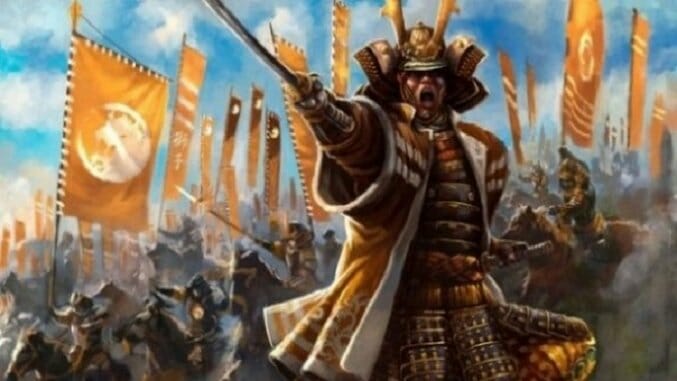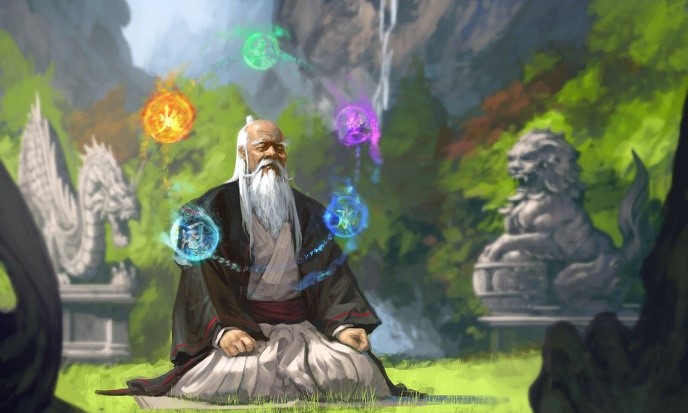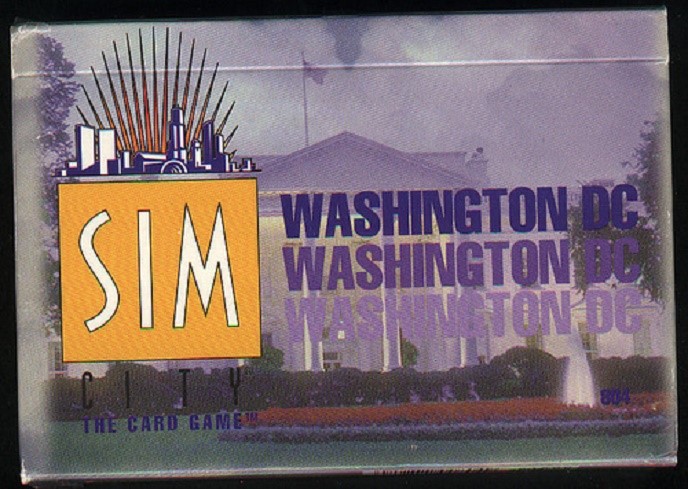
Most collectible card games, or CCGs, are designed around some form of combat, usually fueled by spells, minions and enchanted items. Thanks to smash hits like Magic and Hearthstone, CCGs have come to be defined by crafting the most powerful deck conceivable and using it to systematically crush opponents.
Not all card games are this simple, however. By blending the randomization and collectibility of a CCG with other genres and systems, developers have arrived at some of the most bizarre and off-the-wall mechanics to ever be represented by small pieces of cardboard, both digitally and in print. Card games rely heavily on the luck of the draw, and sometimes this random element can make an otherwise stale genre feel fresh. Sometimes, though, this randomization harms more than it helps, and certain genres and game systems suffer when factors are determined more by sheer luck than player agency. Here are seven of the strangest examples of genre blending in the world of collectible and living card games.
1. Legend of the Five Rings

Legend of The Five Rings is the game you turn to once Magic: The Gathering starts to feel too simple. Instead of focusing on just combat, Five Rings is concerned with the politics, economics and personal intrigue that comes with its Edo Japan-inspired setting. Players can win through military might, but they can also eviscerate their opponents financially, achieve enlightenment through the titular five rings or dishonor opponents in the royal court.
As such, there are a lot of things to keep track of during a game of Five Rings. Matches feel more like a traditional tabletop RPG than a one-on-one card game. In a single game a player might ransack a village, hire a patron to fund a talented artisan and send a geisha to seduce an opponent’s characters and get them to spill clan secrets. It’s no surprise, then, that the world of Five Rings is also the backdrop for a successful pen-and-paper RPG.
The Legend of the Five Rings card game was published by Alderac from 1995 to 2015. Now, the property is owned by megapublisher Fantasy Fight Games, who plan on turning it into a living card game (similar to their game Netrunner) next year. We’ll see how much the new product retains Five Rings’ complex socioeconomic systems.
2. Pocket Card Jockey

For Pocket Card Jockey, it feels like developer GameFreak decorated a dart board with various hobbies and games, closed their eyes, threw two darts and let fate decide what their next project would be. How else could the makers of Pokémon have conceived a simplified solitaire variant dressed up as a horse-racing simulator?
However it came to be, Pocket Card Jockey is addictive. Players resolve bite-sized games of solitaire in order to increase the mood of their horse. The better the horse’s mood, the better its chance to take the lead during the final leg of the race. Before that, it’s all about landing the horse in its Comfort Zone, the place in the pack it likes best. The more comfortable your horse, the more energy it gains—another stat that’s vital to its success in the home stretch.
Needlessly complicated? Sure, but it’s engaging, largely because, as anyone who’s spent hours in front of an internet-less computer could tell you, solitaire itself is such a simple, fun game. Pocket Card Jockey might not tap into the primal need to Catch ‘Em All that GameFreak evokes with their most popular franchise, but it is proof that sometimes the most unlikely pairing can be successful.
3. Metal Gear Acid

How do you fit a triple-A franchise like Metal Gear onto a portable system? Known for its intricate cutscenes, impressive graphics, elaborate bossfights and stealth-oriented action, Metal Gear has always been a technically impressive franchise. Many wondered how Kojima and his team would continue that tradition for the series’ first PSP entry.
Would they return to the franchise’s roots as a top-down adventure like they did for the Game Boy Color’s Ghost Babel? Would they remake an old title to fit the hardware?
Nope. They turned it into a card game.
Metal Gear Acid was a turn-based stealth-action digital CCG. That sounds like a mouthful, but it was generally well-received by critics. Metal Gear has always been self-aware, so collecting cards decorated with the franchise’s colorful cast actually made sense in practice.
Acid was a welcome departure for many fans. It even got a sequel that improved on the original with simplified controls, a colorful visual overhaul and a bizarre 3D peripheral called the Solid Eye.
4. Doomtown: Reloaded

Another game originally from the Alderac Entertainment Group, Doomtown is based off the Old West themed RPG Deadlands. It’s a fairly straightforward game, with one unique twist; every card also corresponds to a card in a regular playing deck, and combat is resolved through hands of poker. The abilities tied to the cards in your deck are just as important as their rank and suite.
The result is that everything about Doomtown—up to and including its combat mechanics—drips with Old West flavor. Resolving combat through poker is a tongue-in-cheek way to represent the game’s setting through its gameplay. Doomtown is a fine game on its own, but its over-the-top commitment to that setting is really what sets it apart from other card games: Characters aren’t “creatures,” they’re “dudes” belonging to a “posse,” and they “boot” their way from the saloon to the bank.
Both Doomtown and Legend of the Five Rings survived the post-‘90s card game apocalypse due to their commitment to their respective settings and how they lifted elements from other games and genres to further this commitment. These games persist because they dare to break the mold.
5. X-Files: The Card Game

Let’s flash back to the ‘90s. Thanks to juggernauts like Magic and Pokémon, card games were all the rage, and every license holder was looking for a piece of the pie. If nerds liked it, it was a prime candidate to be turned into card game. Such is the case with the X-Files Collectible Card Game.
Each player takes the role of both the FBI and an “X-File.” The objective is to discover your opponent’s monster by using agents to investigate sites. If successful, you may ask your opponent one yes or no question about his or her mystery. It’s Clue, Guess Who and Magic, all wrapped up into one game starring David Duchovny.
The X-Files Card Game is a good example of how certain genres simply don’t mesh with a deck of cards. By taking all of the skill out of deduction, the game becomes driven by sheer luck instead of player action.
It’s worth noting that there’s still something of an active fanbase for The X-Files CCG. At GenCon this August, there will be a tournament celebrating the 20th anniversary of the game’s debut, so if you’re eager to try it out, you’re in luck.
6. Sim City: The Card Game

It feels weird to call Sim City: The Card Game a card game at all. Yes, it’s played with colorful pieces of cardboard, there’s a deck and a way to win, but there’s no player interaction in any meaningful way. Instead, players draw from a common deck and gain currency equal to the city blocks they’re able to develop.
It’s pretty close to the computer game it’s based on, but a lot of the fun seems to get lost in the translation. Keeping track of statistics and scores is much easier on a computer than it is on a table. Still, it’s an interesting mix of a management sim and a CCG, and since card games tend to have complex resource systems, it feels in many ways like a natural pairing.
Like the X-Files card game, Sim City takes an interesting game concept and replaces much of the player’s agency with random luck represented by drawing from a deck of cards. Sim games are popular because they call for meticulous and well-thought out planning and preparation, and when those elements are removed in favor of random chance, the appeal starts to drip away.
7. Culdcept
Culdcept sounds like any other fantasy CCG; the player is a spellcaster who draws from his or her book of spells (deck) in order to summon creatures and defeat opponents. Visually, it’s reminiscent of classic strategy titles like Final Fantasy Tactics in its top-down, grid-based presentation.
What makes Culdcept such a strange example of genre bending and blending is that it borrows elements from a popular board game: Monopoly.
Players move around a multicolor board, playing creature cards on empty spaces in order to take them over. Opponents who land on a controlled space and can’t defeat its reigning creature must pay the owner a toll. Players even earn a small salary each time they pass go.
Originally released for the Sega Saturn in Japan, Culdcept has seen multiple rereleases across multiple platforms, but it only made it to North America on the PlayStation 2 in 2003. A sequel, Culdcept Saga, hit the Xbox 360 in 2008.
Culdcept takes a familiar framework and uses cards to spice up the formula instead of replacing entire elements with random chance. For many, the prospect of fighting a demon might be more appealing than actually finishing an entire game of Monopoly.
Luke Walaszek is a writer and critic from Minneapolis. You can find some of his writing at Game Informer, Vice, and other publications. He’s on Twitter as @Urzashottub.
